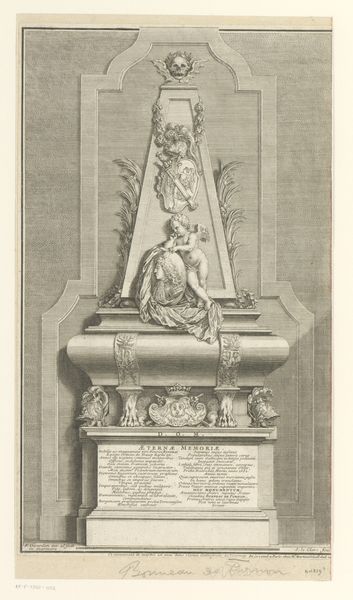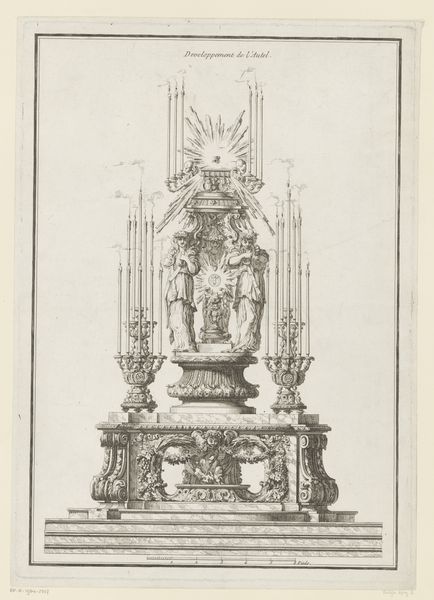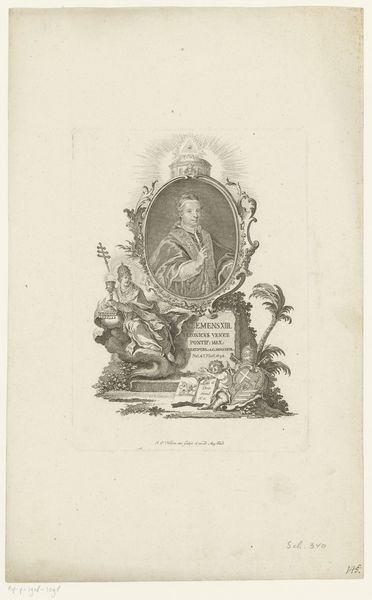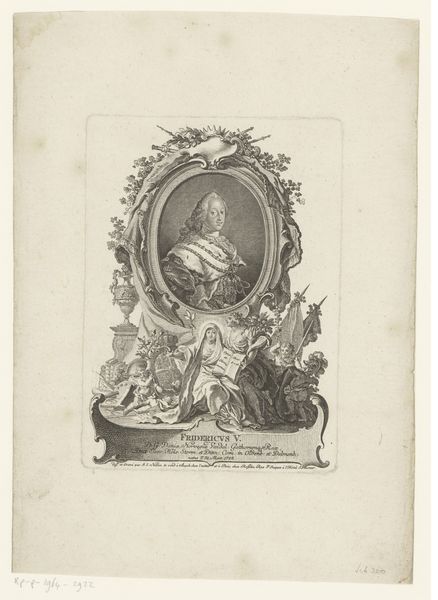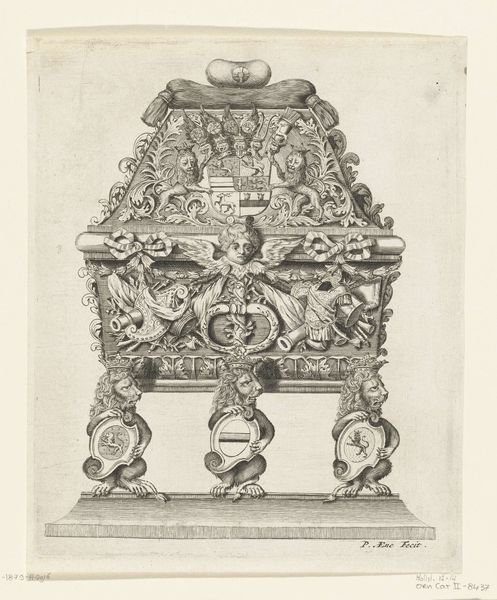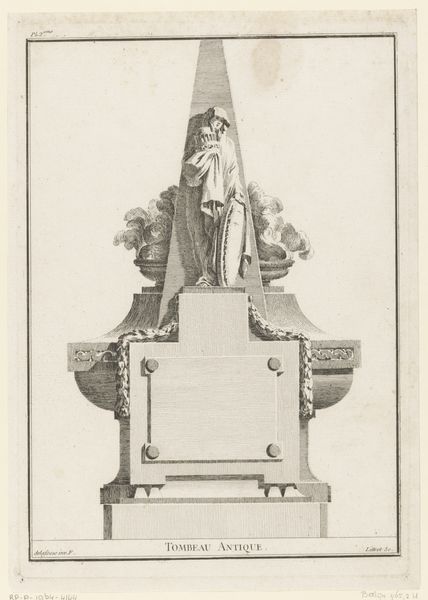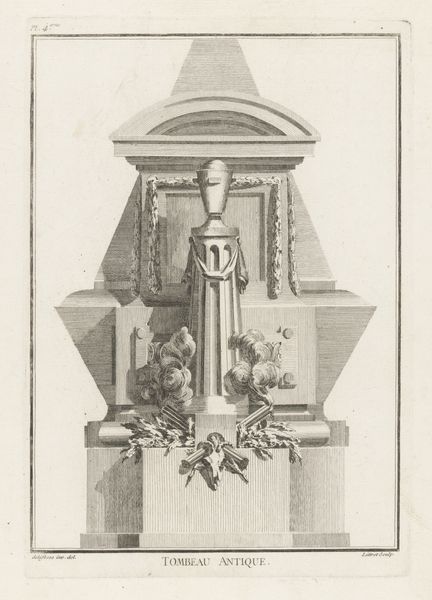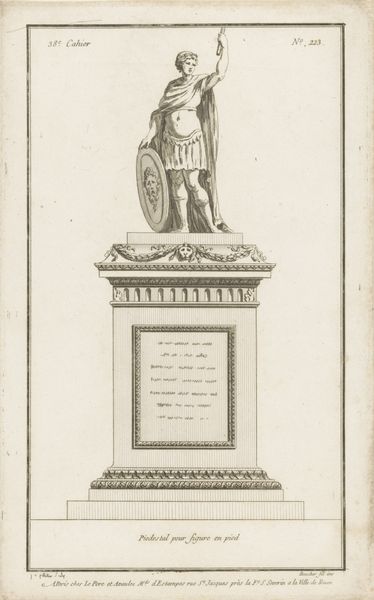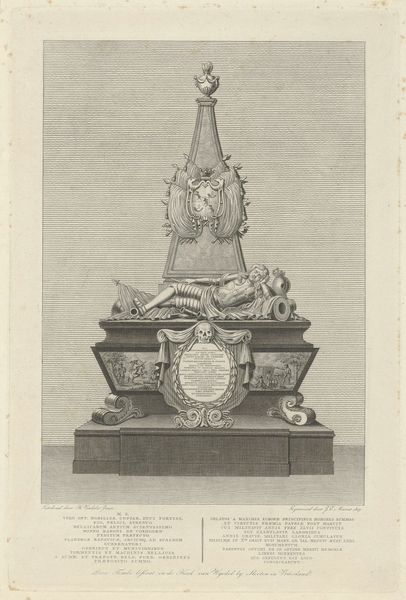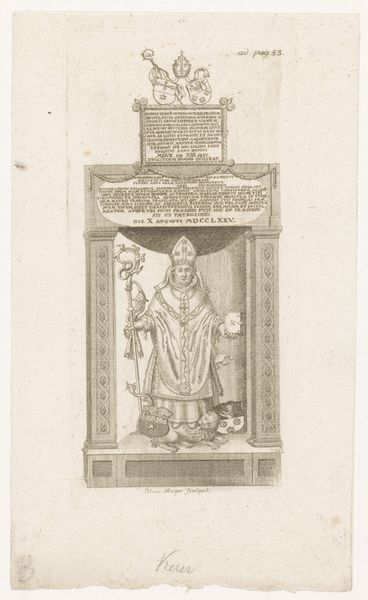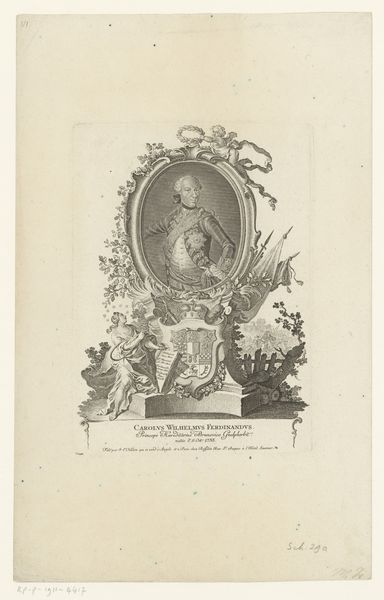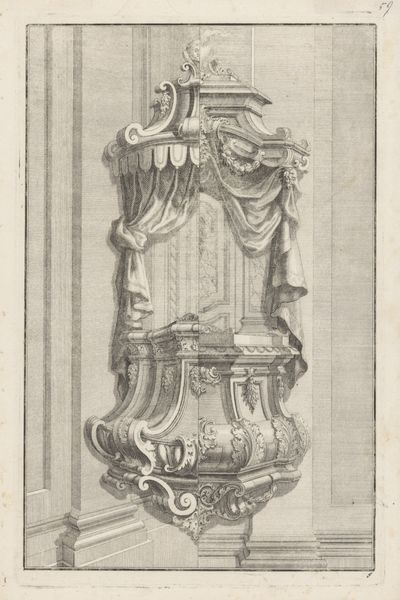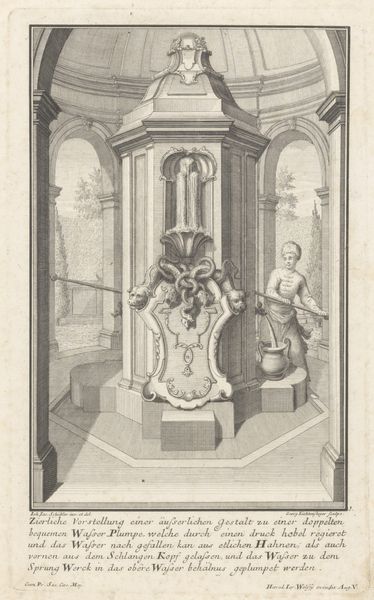
Dimensions: height 226 mm, width 155 mm
Copyright: Rijks Museum: Open Domain
Editor: This is "Portret van Christian Fürchtegott Gellert," an engraving by Johann Esaias Nilson, made between 1769 and 1788. It feels very formal, almost like a monument. What can you tell me about it? Curator: It's interesting that you describe it as a monument. Consider that images like these served as crucial tools for constructing and maintaining public memory, particularly in the 18th century. How do you think representing Gellert in this classical style impacts how viewers perceive him? Editor: I suppose it elevates him, associating him with the wisdom and importance of classical figures? The little scene at the bottom – does that play into this classical reference too? Curator: Exactly. The classical framing invites the viewer to connect Gellert with enduring virtues and intellectual legacies. That scene below suggests harmony and balance, values celebrated in Gellert’s writings. How do you see the female figures flanking Gellert's bust interacting with the overall message of the piece? Editor: They seem to be supporting him, almost literally. They also add to that classical feel. They must be symbolic... maybe muses? Curator: Yes, notice how their presence further underscores the Enlightenment ideal of intellectual pursuit, connecting Gellert to a broader tradition of artistic and philosophical endeavor. What sociopolitical values, if any, could this portraiture reinforce at that time? Editor: I hadn't thought of that... it almost enshrines him, gives him a place within the social and intellectual elite. Maybe that's problematic, because it excludes other voices? Curator: Precisely! By situating Gellert in such a venerated context, it simultaneously centers certain voices and potentially marginalizes others. Recognizing this power dynamic is key to critically understanding such artworks. Editor: This makes me think differently about these older portraits, as active agents that constructed identity and reinforced power. Curator: And by understanding that construction, we can question the historical narrative, excavating the layers of meaning embedded in images like this one.
Comments
No comments
Be the first to comment and join the conversation on the ultimate creative platform.
